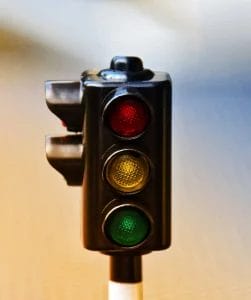What’s Your Migraine Color?
How many times have you been asked to rate your pain on a scale of 0-10? If you’re like me, more times than you can count. But does it really convey the amount of pain AND discomfort we are experiencing? Our migraine treatment plan is often based on the number we assign to our pain, so we need to have a method of communicating that pain and discomfort, as well as how our quality of life is being affected.
Pain scales were created decades ago for the use in pediatric and post operative patients. There are several versions of the 0-10 scale but none truly reflect chronic pain and its impact. The chronic pain scales that have been developed differ in their ranges; scales from 0-8 and 0-14+, but there are many challenges, not least of which being that people with chronic pain often have pain in more than one location at the same time with varying levels! The question patients may have for their doctors is, “Which part of my body and pain do you want an answer about?”
Ideally, we need an assessment method that will ensure a migraine attack treatment plan will provide us with the greatest success. The most efficacy and relief in the shortest amount of time. Using the 0-10 scale’s only measure of success is complete relief, meaning a 0. This is why a ‘Stop Light Theory’ provides a greater chance of success in achieving pain relief while also improving our quality of life.
What Do I Use Instead of the 0-10 Scale?
 I developed a way of communicating my pain and discomfort, and how my quality of life is being impacted, together with my doctor. It’s the ‘Stop Light Theory.’
I developed a way of communicating my pain and discomfort, and how my quality of life is being impacted, together with my doctor. It’s the ‘Stop Light Theory.’
GREEN—‘go’: I am able to do activities of daily living; pain is not distracting; I can function.
YELLOW—‘caution’: Maybe I can do some activities; not quite myself; I can function with effort.
RED— ‘stop’: Nothing else matters but the pain; I can’t do anything; I can’t function at all.
Using this theory, my doctor and I can discuss a treatment plan that isn’t based on a single focus of pain, but rather on how the pain is negatively impacting my quality of life.
traffic light
How Do I Communicate This To My Doctor?
To best communicate what is going on with my doctor I use a headache diary, which is actually a small weekly/monthly calendar book. I found that I needed to be able to watch for trends over time as well as make daily notes. In the monthly section of the calendar book I use small colored round stickers (green, yellow and red) to note how I felt for the day. In the daily section I make several notes including:
- The weather
- Activities
- Abortive/rescue medications needed, the time and my response
- My mood
- Potential triggers
- Signs and symptoms of any migraine attack experienced
Essentially, all the information needed to show what made me pick that particular color for the day.
This has given my doctor and me a more holistic and comprehensive way of assessing, treating and reassessing my treatment plan. We are no longer chasing the “zero” but rather looking at quality of life and how I am as a person—not the individual migraine attacks with a 0-10 level assigned.
green, yellow, red buttons
BUT WHAT IF YOU NEED A NUMBER?
There are instances where I need to assign a number to my pain due to medical documentation requirements. At that point I use the colors as:
GREEN—0-3
YELLOW—4-7
RED—8-10
Remember, pain is subjective and its experience varies from person to person, so you might assign different numbers to these colors! Bearing all of this in mind, the best and most effective manner to convey our pain and discomfort is to look at our emotional and physical well-being in addition to work and family demands; then see how all of that is being impacted. I find a great deal of anxiety over constantly needing to assign my pain a number when I am more than a number, and I find that this “stop light theory” and way of tracking my migraine attacks is so much more meaningful.
women making check marks in red
Let Us Know
As I look at the stop light theory, I see a user-friendly method of pain assessment. It gave me a realistic way to share my emotional, psychological, and physical pain with my doctor. And, it has provided him with a window to see how migraine impacts my whole life. This way, my doctor AND I can create a treatment plan together focused just on my situation.